The U.S. Postal Service will raise many, but not all, of its rates on January 27, 2019. The Postal Regulatory Commission, an independent agency with oversight, approved the entire USPS proposal on November 13, 2018.
 The price for mailing a letter will rise by 5 cents, to 55 cents for the first ounce. However, the price for additional ounces will go down, from 21 cents to 15, “so a 2-ounce stamped letter, such as a typical wedding invitation, will cost less to mail, decreasing from 71 cents to 70 cents,” the USPS said in its October 10th press release announcing its request.
The price for mailing a letter will rise by 5 cents, to 55 cents for the first ounce. However, the price for additional ounces will go down, from 21 cents to 15, “so a 2-ounce stamped letter, such as a typical wedding invitation, will cost less to mail, decreasing from 71 cents to 70 cents,” the USPS said in its October 10th press release announcing its request.
There are two types of mail handled by the USPS: Market Dominant and Competitive. “Market Dominant” are services where the agency has a near-monopoly, such as delivering letters and advertising flyers. “Competitive” are services where the USPS is not the only supplier. Its competition includes companies like United Parcel Service, DHL and Federal Express.
Market Dominant increases, by law, must be no greater than the rate of inflation, which in the past 12 months was 2.5%. However, individual rates can rise more than that, so long as the average is at or below the Consumer Price Index.
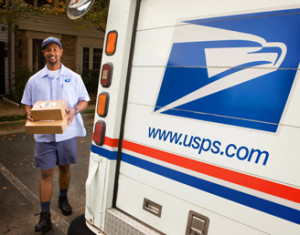 The prices for Competitive products, on the other hand, must not be subsidized by the revenue from Market Dominant products; that is, as a group, Competitive products must pay their own way.
The prices for Competitive products, on the other hand, must not be subsidized by the revenue from Market Dominant products; that is, as a group, Competitive products must pay their own way.
“The Commission found that the rates for both classes of mail meet all statutory requirements and may take effect, January 27, 2019, as planned,” said the PRC.

 New Priority Mail and Express Mail stamps, as well as some definitives, will be issued, likely on the date the new rates go into effect, January 27, 2019. See our preview of the U.S. 2019 stamp program.
New Priority Mail and Express Mail stamps, as well as some definitives, will be issued, likely on the date the new rates go into effect, January 27, 2019. See our preview of the U.S. 2019 stamp program.
 One major change, however, is in “First-Class Package Service—Retail,” which the USPS calls “a lightweight expedited offering used primarily by businesses for fulfillment purposes.” It includes tracking, at about half the cost of Priority Mail.
One major change, however, is in “First-Class Package Service—Retail,” which the USPS calls “a lightweight expedited offering used primarily by businesses for fulfillment purposes.” It includes tracking, at about half the cost of Priority Mail.
Right now, these packages are a flat rate of $3.50 for up to four ounces. After late January, the rate would range from $3.66 to $4.06 for up to four ounces, depending on distance. The service includes tracking.
To determine a domestic zone, use this tool on the USPS website. Choose the second tab, “Get Zone for ZIP Code Pair.”
Here are the basic Mailing Services or Market Dominant prices changes:
Product
Letters (1 oz.)
Letters additional ounces
Letters (metered 1 oz.)
International Letters (1 oz.)
Domestic Postcards |
Current
50¢
21¢
47¢
$1.15
35¢ |
Proposed
55¢
15¢
50¢
$1.15
35¢ |
The domestic Priority Mail Retail Flat Rate price changes are:
Product
Small Flat Rate Box
Small Flat Rate Box
Large Flat Rate Box
APO/FPO Large Flat Rate Box
Regular Flat Rate Envelope
Legal Flat Rate Envelope
Padded Flat Rate Envelope |
Current
$7.20
$13.65
$18.90
$17.40
$6.70
$7.00
$7.25 |
Proposed
$7.90
$14.35
$19.95
$18.45
$7.35
$7.65
$8.00 |
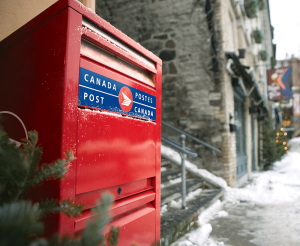 es, the estimated impact of the rate increases on the average Canadian household would be well under a dollar a year, and the total increase for small businesses that use stamps would be estimated at about $6 a year. Canadians can avoid the increase by purchasing Permanent stamps at the current rate in advance, if the changes are approved for next January.
es, the estimated impact of the rate increases on the average Canadian household would be well under a dollar a year, and the total increase for small businesses that use stamps would be estimated at about $6 a year. Canadians can avoid the increase by purchasing Permanent stamps at the current rate in advance, if the changes are approved for next January.
 from the USPS Postal Bulletin May 9, 2019:
from the USPS Postal Bulletin May 9, 2019: Australians are fast adopting international shopping traditions with Black Friday and Cyber Monday combining to form the busiest online shopping week in the country, according to the latest research by Australia Post.
Australians are fast adopting international shopping traditions with Black Friday and Cyber Monday combining to form the busiest online shopping week in the country, according to the latest research by Australia Post. General Manager Parcel & Express Services, Ben Franzi, said the research shows a continuing shift in the timing and channels shoppers use to make their key purchases.
General Manager Parcel & Express Services, Ben Franzi, said the research shows a continuing shift in the timing and channels shoppers use to make their key purchases. Mary-Anne Penner, the head of Stamp Services for the U.S. Postal Service, has retired. Penner had said she would be retiring, with the exact date depending on her husband’s health and completion of their retirement home. The rumor that she had retired or had given notice had been kicking around for a week before
Mary-Anne Penner, the head of Stamp Services for the U.S. Postal Service, has retired. Penner had said she would be retiring, with the exact date depending on her husband’s health and completion of their retirement home. The rumor that she had retired or had given notice had been kicking around for a week before 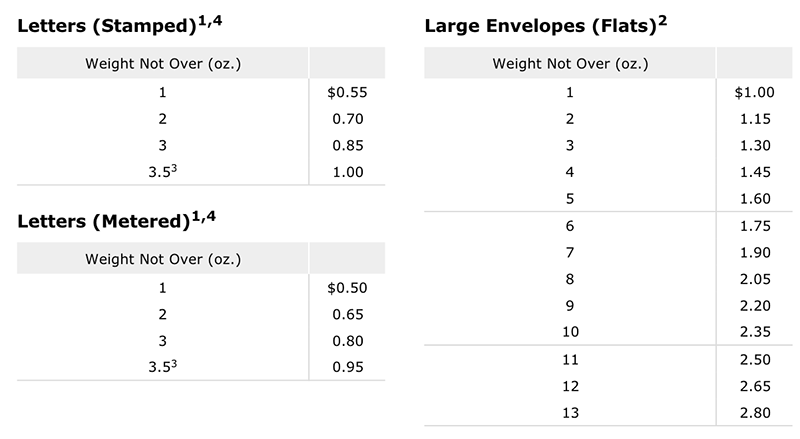
 One major change is in “First-Class Package Service—Retail,” which the USPS calls “a lightweight expedited offering used primarily by businesses for fulfillment purposes.” It includes tracking, at about half the cost of Priority Mail. However, it is not easy to produce a table for this service, because the rate now
One major change is in “First-Class Package Service—Retail,” which the USPS calls “a lightweight expedited offering used primarily by businesses for fulfillment purposes.” It includes tracking, at about half the cost of Priority Mail. However, it is not easy to produce a table for this service, because the rate now 
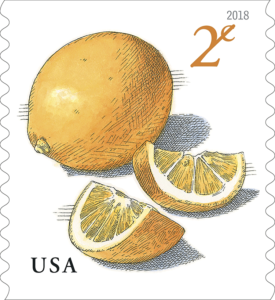 Effective January 27, 2019, the following low denomination coils in the 10k format will also be available in the 3k format:
Effective January 27, 2019, the following low denomination coils in the 10k format will also be available in the 3k format: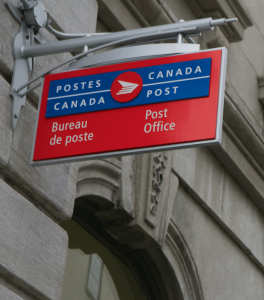 OTTAWA, Jan. 4, 2019 /CNW/ – Postage rates rise on January 14, with the price for stamps purchased in a booklet, coil or pane for domestic LettermailTM items weighing 30 grams or less increasing to $0.90, up from $0.85. The price of a single domestic stamp will increase to $1.05, up from $1.00.
OTTAWA, Jan. 4, 2019 /CNW/ – Postage rates rise on January 14, with the price for stamps purchased in a booklet, coil or pane for domestic LettermailTM items weighing 30 grams or less increasing to $0.90, up from $0.85. The price of a single domestic stamp will increase to $1.05, up from $1.00. A U.S. Treasury Department task force, ordered by President Trump, is proposing an overhaul to the U.S. Postal Service, including (and perhaps in particular) how it prices packages delivered by e-commerce companies like Amazon.
A U.S. Treasury Department task force, ordered by President Trump, is proposing an overhaul to the U.S. Postal Service, including (and perhaps in particular) how it prices packages delivered by e-commerce companies like Amazon.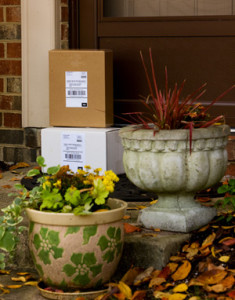 Sustainable Path Forward, provides a series of recommendations to overhaul the United States Postal Service’s (USPS) business model in order to return it to sustainability without shifting additional costs to taxpayers.
Sustainable Path Forward, provides a series of recommendations to overhaul the United States Postal Service’s (USPS) business model in order to return it to sustainability without shifting additional costs to taxpayers. WASHINGTON — Yes, Virginia, there is a Santa Claus — and the U.S. Postal Service can help you prove it when Santa replies to your child’s letter — complete with a North Pole postmark (right).
WASHINGTON — Yes, Virginia, there is a Santa Claus — and the U.S. Postal Service can help you prove it when Santa replies to your child’s letter — complete with a North Pole postmark (right). “Letters from Santa” must be received by the Anchorage, AK, postmaster no later than Dec. 15. Santa’s helpers at the Postal Service will take care of the rest.
“Letters from Santa” must be received by the Anchorage, AK, postmaster no later than Dec. 15. Santa’s helpers at the Postal Service will take care of the rest. The price for mailing a letter will rise by 5 cents, to 55 cents for the first ounce. However, the price for additional ounces will go down, from 21 cents to 15, “so a 2-ounce stamped letter, such as a typical wedding invitation, will cost less to mail, decreasing from 71 cents to 70 cents,” the USPS said in its October 10th press release announcing its request.
The price for mailing a letter will rise by 5 cents, to 55 cents for the first ounce. However, the price for additional ounces will go down, from 21 cents to 15, “so a 2-ounce stamped letter, such as a typical wedding invitation, will cost less to mail, decreasing from 71 cents to 70 cents,” the USPS said in its October 10th press release announcing its request. The prices for Competitive products, on the other hand, must not be subsidized by the revenue from Market Dominant products; that is, as a group, Competitive products must pay their own way.
The prices for Competitive products, on the other hand, must not be subsidized by the revenue from Market Dominant products; that is, as a group, Competitive products must pay their own way.
 New Priority Mail and Express Mail stamps, as well as some definitives, will be issued, likely on the date the new rates go into effect, January 27, 2019. See our
New Priority Mail and Express Mail stamps, as well as some definitives, will be issued, likely on the date the new rates go into effect, January 27, 2019. See our 

